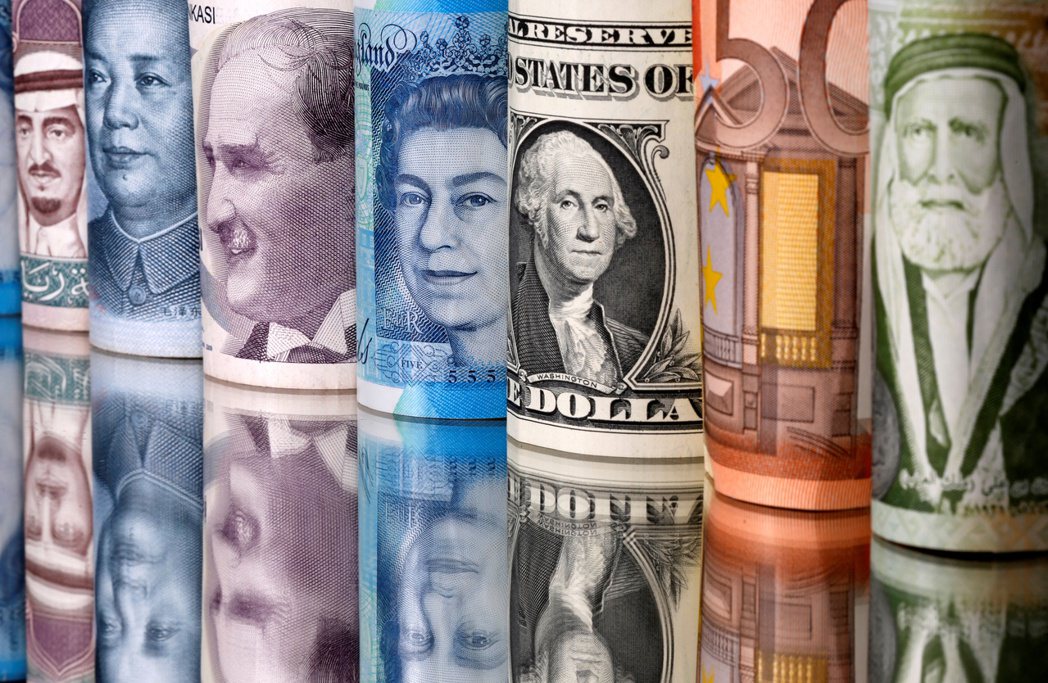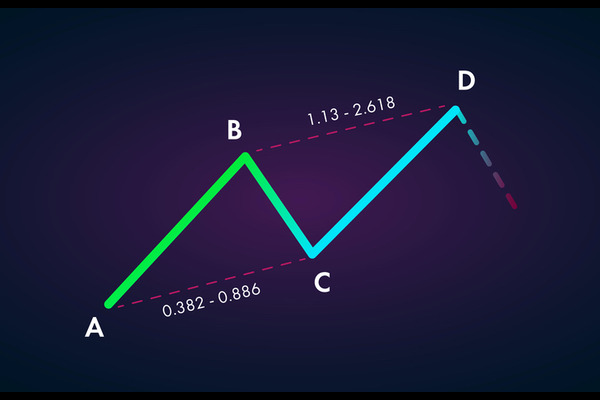For any trader, investor, or portfolio manager's toolbox, it is a primary
supplement. Let's take a look at the 8 currencies and their issuing
countries' central banks that every trader or investor should know.

1. USD
Central Bank: Federal Reserve
The old Dollar
The Federal Reserve, established in 1913 under the Federal Reserve
Regulations, is the central banking institution of the United States. The system
itself is led by a chairman and a board of directors, mainly focusing on the
Federal Open Market Committee (FOMC), a branch. The Federal Open Market
Committee oversees Open market operations and monetary policy, or interest
rates.
The current committee consists of 12 current presidents of the Federal
Reserve Bank and 7 members of the Federal Reserve Board of Governors. The
Federal Reserve Bank of New York has been serving on the committee. Even with 12
voting members, non-member countries (including additional Federal Reserve Bank
governors) are invited to share their views on the current economic situation
during the committee's six-week meetings.
The US dollar is sometimes referred to as the "greenback" and is the domestic
currency of the world's largest economy, the United States. Like any currency,
the US dollar is supported by economic fundamentals (including GDP), as well as
manufacturing and employment reports. However, the US dollar is also widely
influenced by the central bank and any interest rate policy announcements. The
US dollar is the benchmark for trading against other major currencies,
especially the euro, yen, and pound sterling.
2. Euro
Central Bank: European Central Bank
The Deadly Opponent of the US Dollar
The European Central Bank, headquartered in Frankfurt, Germany, is the
central bank of the 17 member countries of the eurozone. Similar to the Federal
Open Market Committee of the United States, the European Central Bank has a main
body responsible for making monetary policy decisions, that is, an executive
committee composed of five members and headed by a chairman. The selection of
other policy leaders is based on the consideration that four of the remaining
seats are reserved for the four largest economies in the system—Germany, France,
Italy, and Spain—in order to ensure that the largest economy is always
represented in the event of management changes. The committee holds
approximately 10 meetings annually.
In addition to having jurisdiction over monetary policy, the European Central
Bank also has the power to issue currency. Similar to the Federal Reserve,
policymakers sometimes intervene when banks or systems fail. The European
Central Bank differs from the Federal Reserve in an important area: its main
goal is price stability rather than maximizing employment and maintaining
long-term interest rate stability, followed by a commitment to general economic
policy. Therefore, decision-makers will shift their focus towards consumer
inflation when making key interest rate decisions.
Although the euro monetary system is somewhat complex, it is not complex.
Compared to other major currencies such as the pound or Australian dollar, the
euro has less volatility against the US dollar. The daily average fluctuation
range of the Euro-US dollar is 30–40 points, and when the fluctuation range is
large, it is 60 points. Another consideration is time. Due to the 24-hour
opening of the forex market, forex traders must
strategically develop a forex trading schedule. During trading hours
in London and the United States (2 a.m. to 11 a.m. Eastern Standard Time), euro
currency pairs can be traded.
3. Japanese Yen (JPY)
Central Bank: Bank of Japan
Technically complex, fundamentally simple
The Bank of Japan was established in 1882 and was the central bank of Japan,
the world's second-largest economy at the time. It was responsible for monetary
policy, currency issuance, money market operations, and data and economic
analysis. The main monetary policy committee tends to strive for economic
stability, constantly exchanging views with the ruling government while striving
to achieve independence and transparency. The central bank holds 12–14 meetings
annually, led by a team of nine policy members, including two double-appointed
vice presidents.
The yen tends to be used for arbitrage trading. The Japanese yen provides low
interest rates and is used for trading against high-yield currencies,
particularly the New Zealand dollar, Australian dollar, and British pound.
Therefore, the volatility of the yen is often high, prompting forex
traders to view the yen from a technical perspective for a long time. The daily
average fluctuates by 30–40 points, with a maximum of 150 points. If you want to
try trading against the Japanese yen, you can focus on the overlapping period
between London and the US trading hours (6 a.m. to 11 a.m. Eastern Standard
Time).
4. GBP
Central Bank: Bank of England
The Queen's Currency
As the main regulatory body in the UK, the Bank of England echoes the Federal
Reserve. In the same way as the Federal Reserve, the Bank of England established
a committee led by the Governor, consisting of nine members, including four
external participants (appointed by the Chancellor of the Exchequer), the Chief
Economist, the Head of Market Operations, the Chief Economist of the committee,
and two Vice Presidents.
The Monetary Policy Committee meets once a month to decide on interest rates
and broader monetary policy, with the main goal of overall price stability in
the economy. Therefore, the Monetary Policy Committee has set the benchmark for
consumer price inflation at 2%. If this benchmark is breached, it is the
responsibility of the governor to notify the Chancellor of the Exchequer in
writing, through a letter. In 2007, the UK consumer price index sharply rose to
3.1%, and the central bank governor took relevant measures at that time. For the
market, the release of this letter is often a precursor, as it increases the
likelihood of monetary policy contraction.
Compared to the euro, the volatility of the pound is relatively high, with a
wider daily average range of 100–150 points, but 20 points are not uncommon. The
volatility of currency pairs that are worth noting tends to endow sterling with
characteristics of volatility, with traders focusing on currency pairs such as
sterling/yen and sterling/Swiss franc. Therefore, during trading hours in London
and the United States, the volatility of the pound may be the highest, while
during the Asian period (5 p.m. to 1 a.m. Eastern Standard Time), the volatility
of the pound is the lowest.
5. CHF
Central Bank: Swiss National Bank
Banker's Currency
Unlike other major central banks, the Swiss Central Bank is the governing
body of public-private partnerships. This belief stems from the fact that the
Swiss National Bank is technically a specially regulated company. Therefore,
over 50% of the Swiss central bank is state-owned. This arrangement focuses on
the economic and financial stability policies stipulated by the Swiss Central
Bank's board of directors. Compared to most central bank boards, the Swiss
Central Bank's board of directors is relatively small, with three major bank
heads meeting quarterly to formulate monetary policy decisions.
The council determines the range of interest rates (plus or minus 25 basis
points).
The relationship between the euro and the Swiss franc is very interesting.
Similar to the euro, the Swiss franc will not experience significant
fluctuations during any individual trading session. Therefore, the daily average
fluctuation range of the Swiss franc is 35 points. The Swiss franc usually has
the highest trading volume during the London trading hours (2 a.m.–8 a.m.
Eastern Standard Time).
6. Canadian dollars
Central Bank: Bank of Canada
Luni
The Bank of Canada was established under the Bank of Canada Act of 1934, with
the responsibility of "focusing on low and stable inflation targets, safe and
stable currencies, financial stability, and effective management of government
funds and public debt". The Bank of Canada acts independently and shares
similarities with the Swiss Central Bank, as it is sometimes seen as a company
directly owned by the Ministry of Finance. Although the interests of the
government are closely related, while considering government concerns, the
central bank governor also has the responsibility to maintain a certain distance
from the current government and promote long-term price stability. The Bank of
Canada's inflation target is 2–3%, and when there is any deviation in prices,
the central bank tends to maintain a hawkish stance rather than a dove
stance.
The Canadian dollar maintains contact with major currencies, with an average
daily fluctuation range of 30–40. Many currency prices and commodity trends are
consistent, and a unique feature of the Canadian dollar is its relationship with
Crude Oil. Canada is a major exporter of commodities, so a large number of
traders and investors use the Canadian dollar to hedge their current commodity
positions or engage in pure speculation to track signals in the oil market.
7. AUD/NZD
Central Bank: Federal Reserve of Australia/Federal Reserve of New Zealand
Has always been the favorite of arbitrageurs.
The interest rates provided by the Federal Reserve of Australia are at a
relatively high level in major global markets, and its long-term plan has always
been based on price stability and economic growth. The central bank council is
composed of six members led by the governor, as well as one vice governor and
one finance minister. They work together to control inflation between 2 and 3%
and hold nine meetings annually. Similarly, the New Zealand Federal Reserve is
also working hard to push for inflation targets, hoping to use them as a basis
for prices.
Both currencies are the focus of arbitrage traders, as the Australian dollar
and New Zealand dollar offer the highest returns among the seven major
currencies on most platforms. Therefore, if deleveraging occurs, these currency
pairs will experience volatility. In addition, like other major currencies, the
daily fluctuations of the Australian dollar and New Zealand dollar range from 30
to 40 points. Both currencies are closely related to commodities, with the most
obvious being silver and gold.
8. South African rand (ZAR)
Emerging Opportunities
The South African Reserve Bank, formerly modeled after the Bank of England,
is South Africa's monetary regulator. Its responsibilities are similar to those
of other central banks. In some cases, the South African Reserve Bank is also
called the creditor, clearing bank, and main gold custodian. Most importantly,
the central bank is responsible for 'achieving and maintaining price stability',
including intervening in the forex market in the event of unforeseen
circumstances.
Interestingly, the South African Reserve Bank is still a completely private
institution with more than 600 shareholders, whose shareholding ratio is less
than 1% of the total equity. This is to ensure that South Africa's interests
outweigh any personal interests. To maintain this policy, a board of directors
composed of the president and 14 members is responsible for the operation of the
central bank and is committed to achieving monetary goals. The board of
directors meets six times a year.
The daily average fluctuation range of the South African rand can reach 1000
points, with relatively high volatility. But don't be confused by the large
fluctuations, because if converted into dollars, the fluctuation range is
equivalent to that of sterling, which makes the South African rand dollar a good
currency pair (especially when considering the arbitrage potential). Traders
also considered the relationship between the South African rand and gold and
platinum. South Africa is a global leader in the export of these two metals, so
it is natural that there is a similar relationship between the Canadian dollar
and crude oil. Therefore, in the absence of sufficient economic data, consider
the opportunities created by the commodity market.
conclusion
With the continuous development and growth of financial markets worldwide,
forex and currency will play an increasingly important role in daily
transactions. The nominal trading volume of the forex market exceeds
$5 trillion on a daily basis. Therefore, whether it is for currency exchange in
physical trade or simple portfolio diversification, forex continues
to provide more opportunities for retail and institutional investors.







